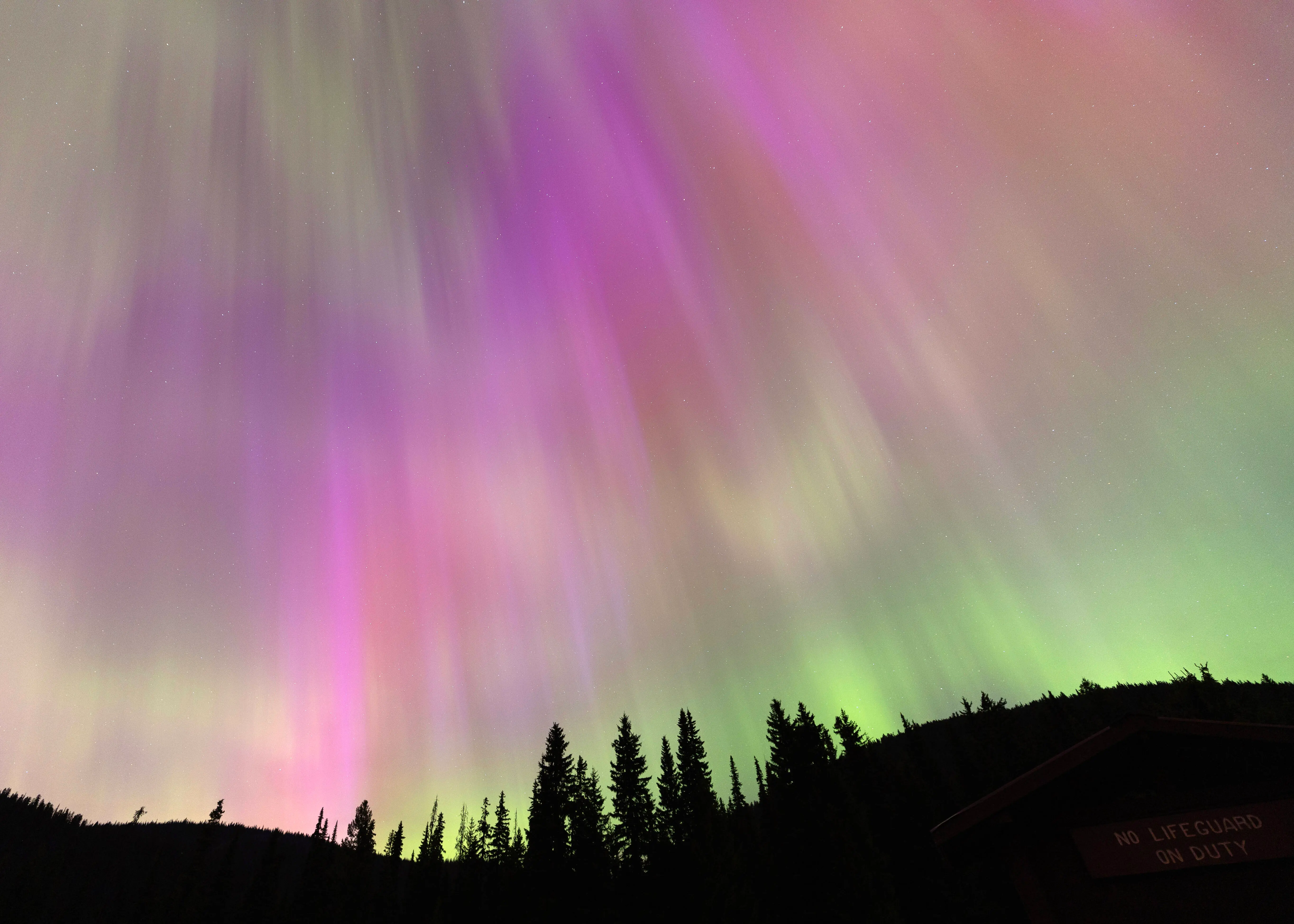Four solar eruptions are racing toward Earth and could create dazzling northern lights this week
-
 MANNING PARK, BRITISH COLUMBIA - MAY 11: The Aurora borealis, commonly known as the northern lights, is seen on May 11, 2024 in Manning Park, British Columbia, Canada. (Photo by Andrew Chin/Getty Images)
MANNING PARK, BRITISH COLUMBIA - MAY 11: The Aurora borealis, commonly known as the northern lights, is seen on May 11, 2024 in Manning Park, British Columbia, Canada. (Photo by Andrew Chin/Getty Images)Sky observers might be in for a treat this week as researchers verify that four coronal mass ejections (CMEs) are already on their way to Earth. The solar flares, unleashed from the Sun in recent days, should arrive on the planet shortly and have the potential to ignite dynamic auroras viewable across much of the Northern Hemisphere.
In accordance with the National Oceanic and Atmospheric Administration's (NOAA) Space Weather Prediction Center, the approaching CMEs can merge to initiate a moderate to intense geomagnetic storm when they encounter Earth's magnetic field.
Such types of solar events tend to produce colorful patterns of northern lights or auroras, observable farther south than normal. Coronal mass ejections are huge outpourings of plasma and magnetic fields from the Sun's corona, which is the outermost part of its atmosphere.
When these clouds of charged particles arrive at Earth, they crash into the planet's magnetic field and release energy that heats up atmospheric gases and produces glowing waves of light in the sky.
Under normal circumstances, aurorae are limited to high-latitude zones close to the poles, but intense solar storms may drive them into mid-latitude zones. This would include states like Montana, Minnesota and Michigan in the United States, or parts of the U.K. and northern Europe, which may get a view if things fall into place.
When and where to look
Scientists are forecasting that the CMEs might reach between Thursday and Saturday, depending on their velocity and the direction of impact. The precise timing and visibility will depend on how solar wind interacts with Earth's magnetosphere.
If the skies are clear and light pollution is minimal, onlookers can see glimmering curtains or waves of green, pink and violet light at night. Professionals recommend locating a dark, open space away from urban lights and giving the eyes around 20 minutes of darkness to acclimate to the best viewing experience.
The NOAA and NASA closely observe solar activity with satellites such as the Solar and Heliospheric Observatory (SOHO) and the Solar Dynamics Observatory (SDO). These missions monitor solar flares, sunspots and CMEs in order to more accurately forecast how solar storms can affect Earth.
While auroras are a lovely result of these solar interactions, more intense storms may also briefly impact communications, GPS systems and satellite operations. To date, scientists project that this week's geomagnetic storm will be moderate in nature and minimal in risk to technology and power grids.
A season of solar activity
The Sun is approaching the top of its 11-year solar cycle, so such occurrences are more frequent. Rising solar activity creates more CMEs, flares, and auroral activity worldwide.
For impatient viewers, authorities suggest consulting current aurora forecast charts from NOAA's Space Weather Prediction Center or similar services, which are constantly updated as conditions evolve.
As the CMEs approach, both amateur astronomers and backyard skygazers are gearing up for what might be one of the brightest aurora shows of the year. Whether it is a pale glow on the horizon or a full, colored sky, this week might bring a once-in-a-while view into the dynamic connection between the Sun and Earth.
TOPICS: Northern Lights
- Rare Northern Lights event could continue tonight across Chicago — when and where to look
- Northern Lights could be seen across the southern US as strong solar storm hits Earth
- Geomagnetic storm may bring Northern Lights to 22 US states: When and where to catch the colorful glow
- Northern Lights may be visible in 14 US states from October 27 to 29 — here’s when and where to look